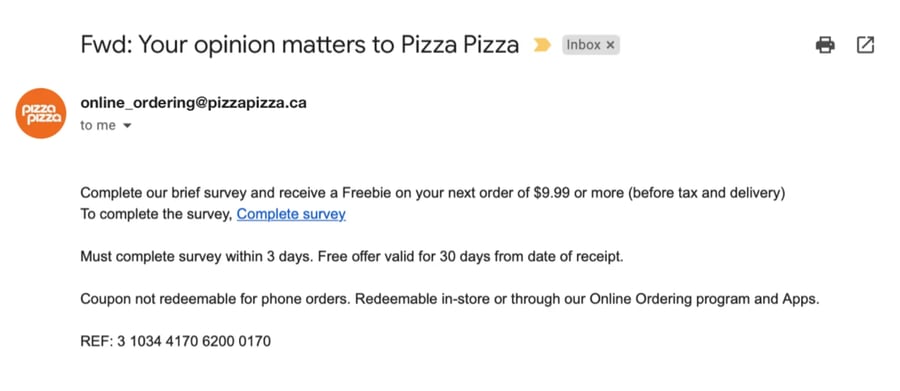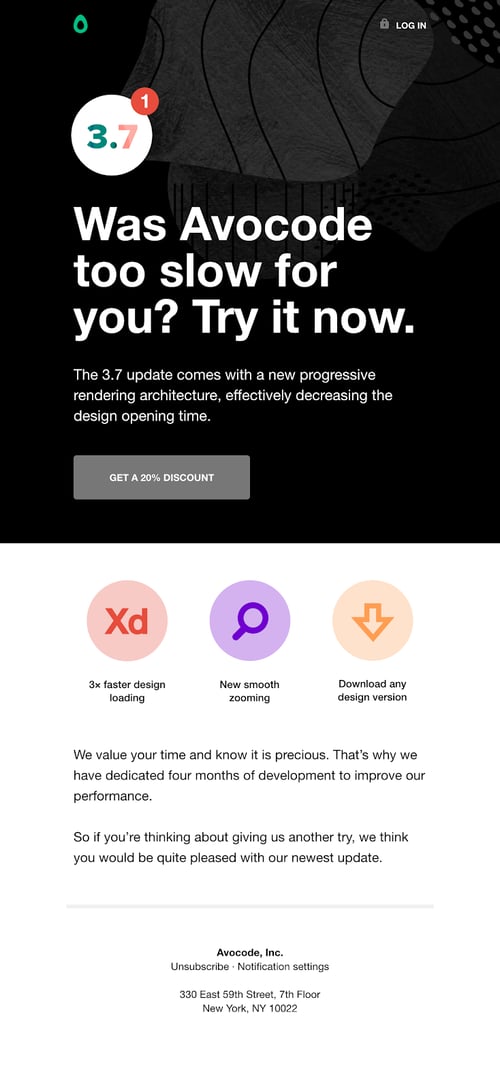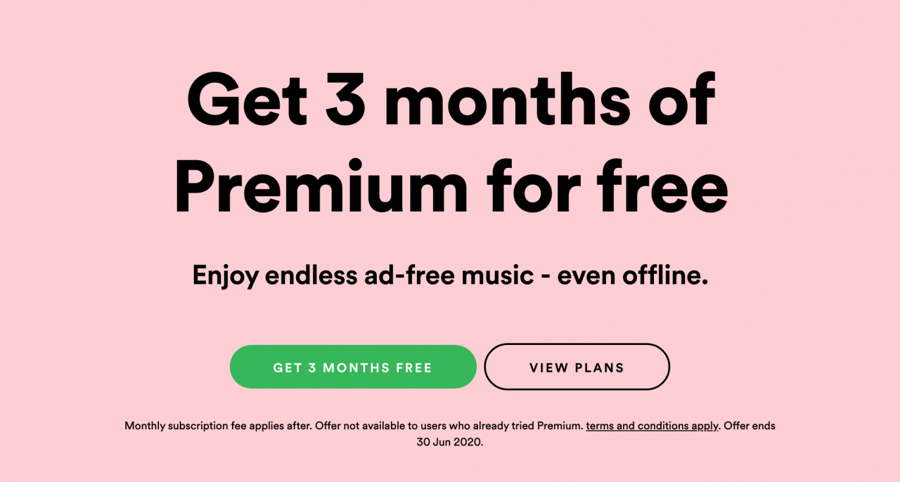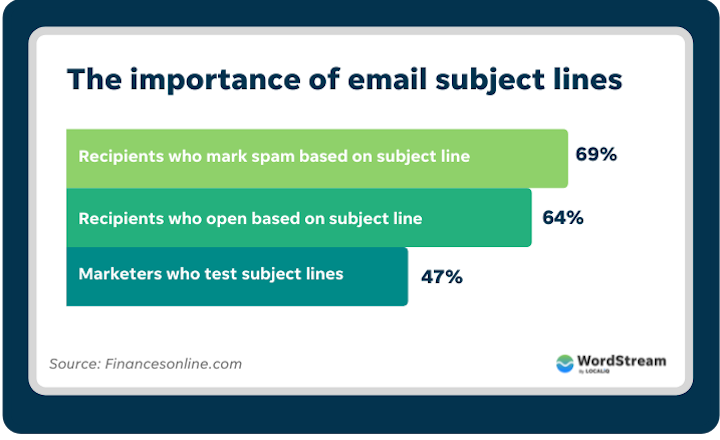
Losing customers can be critical for companies, not to mention costly. In fact, statistics show that the cost of acquiring new customers is five times higher than retaining existing ones.
With that in mind, having a fool-proof strategy in place to help win back and retain any lost customers is understatedly important. But what strategy should you follow? What should you use?
Enter: targeted content.
What Is Targeted Content?
Targeted content is content that has been created for a specific audience at a specific time in the user journey. It is designed to drive conversions.
You may have heard of the phrase “content is king.” While that is true, it’s not enough to just have lots and lots of content.
Why?
Because unless it speaks to someone, it will be overlooked in a second.
According to Forbes, we consume six hours and 59 minutes of content on average daily. Consumers have become numb to the amount of content they’re hit with across multiple platforms throughout. Giving your potential customers exactly what they’re looking for when they need it naturally boosts engagement and conversions.
Why You Should Use Targeted Content
Now that we know what targeted content means, let’s look at why you should use targeted content. The most obvious reason is in the name. Targeted content is specific to your audience, meaning it should catch their eye and satisfy their needs and wants.
Happy customers mean more conversions.
With targeted content, you can also build relationships with your customers, which results in them coming back. In fact, 78% of consumers believe that organizations providing custom content are interested in building good relationships. Additionally, research states that 91% of customers are more likely to shop from brands that recognize, remember, and provide them with relevant offers and recommendations.
It’s not only customers who favor targeted content. So do search engines, as Google’s Helpful Content Update made clear.
When you create content that includes specific keywords that are relevant to your audiences’ search terms, the more likely your content will rank higher and get noticed. Another effective way of getting search engines on your side is to choose pillar pages that will rank.
Targeted content also helps your company stand out. However, many companies will be fighting for the same customers with their targeted content strategies. It is a common problem for companies to lose customers to competitors. This happens as consumers are fickle, and their buying behavior will reflect this.
How Do You Win Back Customers With Targeted Content?
If you’re struggling to retain customers, then using targeted content can be an effective strategy to bring them back and keep them. Below we’ve outlined five tips to show you how you can leverage your targeted content and maintain those all-important conversions.
1. Know Your Customers
This may sound like an obvious one, but too many companies make assumptions about their customers based on historical data and trends. Sometimes, they also simply don’t look deep enough.
Not keeping on top of your customers’ wants, needs, and behavior patterns can be a crucial mistake for any marketing activity. But this becomes even more critical when crafting targeted content. If you don’t know your audience inside out, how can you make it targeted to them? Your targeted content will be wasted if it isn’t actually what your customers want anymore.
Begin by gathering all your customers’ data and analyzing it. This data should have everything you know about them. Here are a few examples of what you should be collecting:
Demographics
- Age
- Gender
- Income
- Occupation
- Nationality
Psychographics
- Lifestyle
- Personality characteristics
- Values
- Beliefs
- Interests
Behavioral
- Purchasing history
- Engagement
- Loyalty
- Account activity
- Readiness to buy
Apart from the demographics, you can collect data about your audience’s online behavior. You can get all this information from Google Analytics, your customer service team, and even discussion forums.
With this up-to-date data, create or edit your customer profiles and/or buyer personas. These should clearly illustrate exactly who your customers are, their motivations and values, buying behavior, wants and needs, and their pain points. Knowing this is an absolute must for creating targeted content.
2. Determine the Reasons for Losing Customers
Now that you have a refreshed understanding of your audience, it’s time to analyze why you lost them in the first place. Without this information, you won’t know how to win them back.
There may be many reasons why your customers have left, including price concerns, poor customer experience, or dissatisfaction with the product itself — they may have even returned a product. But be sure not to make assumptions again! Your lost customers themselves should provide you with the answers you need.
So how do you get the answers you need? Reviews and customer feedback are great ways to capture opinions. People tend to leave reviews and feedback when their experience is significant in some way. Research states that customers who have a bad experience are twice as likely to leave a review compared to happy customers.
If you feel you don’t have enough existing reviews or feedback data, consider incentivizing your lost customers to complete the surveys (it will be money well spent in the long run). The example below from Pizza Pizza is a great way to encourage lost customers to leave their feedback.

Source: Getsitecontrol
By knowing the reason your customers left, paired with their motives, wants and needs, and buying behavior, you should be able to create effective targeted content to win back these valuable customers. Using targeted content in this way will ensure that you don’t waste time and resources trying to pull back customers who are a lost cause.
3. Remind Customers about the Value You Can Offer Them
When it comes to losing customers, remember that they chose you first, and that means they saw value in your company. In creating your targeted content, remind them of the value they saw in you. Remember to always go back to your customer research. What was the reason your customer left? Address this in your targeted content, too.
For example, if the data showed that customers were confused while navigating your website, use targeted content to show how you have improved your website with helpful shortcuts or new category pages. Your customers will appreciate that you’ve tried to resolve the issues, showing you value their opinion.
A real-life example from Avocode, a design tool, is shown below. Their customer data research showed that quick load times are highly valued, and slow load times led to customers dropping off. This targeted content used in an email acknowledged that their site might have had issues in the past and promised an improved experience upon return.
A simple message such as “We value your time and know it’s precious.” allows customers to feel important. To incentivize customers, Avocode even threw in a 20% discount. We’ll talk more about this tactic later.

Source: Really Good Emails
Use targeted content to show the customers you lost why they should remain loyal customers — because you listen to them and understand them.
This focus on great customer support is something that I’ve taken to heart at Acme Hats. For example, people who order through our custom embroidered hats page get feedback on the complexity of the design and other tips based on our years of experience in the industry.
These tips and insights are a differentiator that customers appreciate. It impacts customer retention, which keeps customers coming back.
4. Offer Incentives
If you feel those lost customers need a little more persuading to come back, then incentives, discounts, and promotions will always catch someone’s attention. Cash discounts, free shipping, or gift vouchers are just a few examples of this effective tactic for that final nudge. After all, who doesn’t love to feel they are saving money?
Different customer subsets will be attracted by different things, so ensure you refer back to your customer data and tailor your offers accordingly. A discount for a one-off purchase may not ensure they keep coming back to you. Think. Would this customer prefer a gift after three purchases? Or maybe a discounted membership, as done by Spotify here, is better?

Source: Route Note
Remember, you need targeted offers, too. A one-size-fits-all strategy in this scenario will not be effective.
Don’t just wait for your customers to see your tailored offers. Promote them, too. There are other platforms you can take advantage of apart from email. You can use retargeted ads and social media ads to get your bespoke offers to the right people.
5. Improve Customer Retention
You’ve successfully managed to win back those customers. But to prevent history from repeating itself, it’s essential to learn from what happened before and adopt a strong customer retention plan.
Your new and improved targeted content did a great job of attracting customers at the right time, but now you need to keep them engaged. Make sure you provide your customers with the latest knowledge, industry trends, tips, and advice based on what they want to know.
Sending targeted email campaigns is a good strategy to keep you on their radar. According to Semrush, email marketing is 56% more effective than any other method for customer retention. But make sure you don’t bombard people with pointless or irrelevant content; this is likely to have an adverse effect.
A strong subject line here can make or break getting your targeted content noticed. Check out the image below for some stats on email subject lines:

Source: Wordstream
Be aware of the warning signs that may mean you’re about to lose a customer. Warning signs may include a decrease in engagement and activity on your platforms, increased complaints, or low open rates and link clicks.
Get your customers’ feedback on a regular basis. This way, you can respond immediately to any negative feedback and prevent customers from leaving your brand.
In Closing
Without customers, there are no conversions, and no conversions equal no sales. Losing customers stings all companies, but by using these five steps for a strong, targeted content plan, you can win them back and keep them for good.
By starting with customer data, you should be able to know who your audience is. With surveys, you can also easily identify the reasons you lost customers. Then strengthen your value proposition in your targeted content. From here, you can create an effective retention plan using targeted content.
The more you know your customers, the more targeted you can be. Understanding what your audience wants will always be the main driver for success. Lastly, ensure that you consistently monitor how successful your targeted content is so that you can be sure it’s actually working.





Leave a reply or comment below